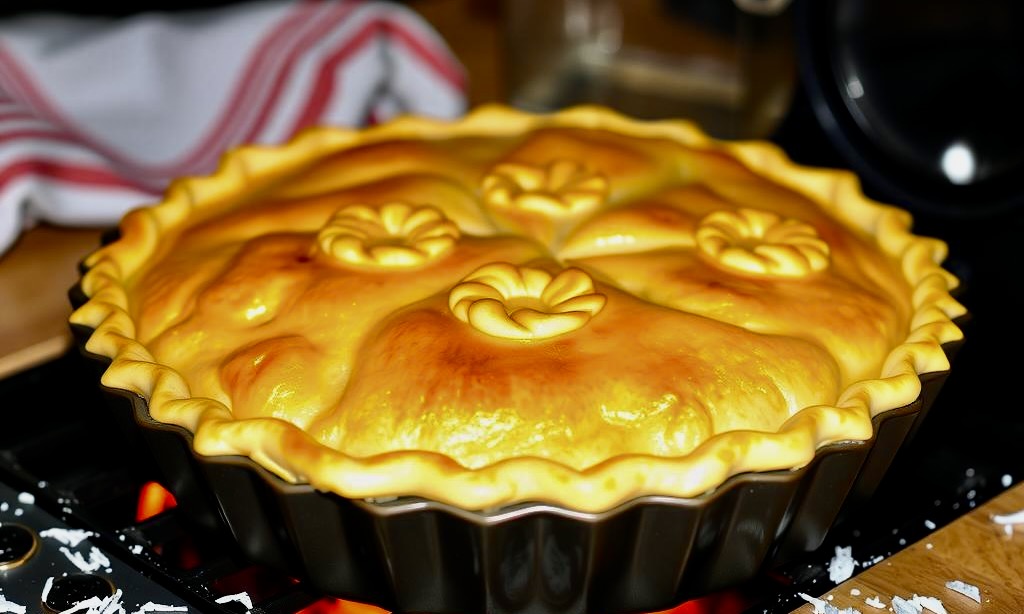
Beyond the Turkey
A Science-Backed Guide to Meaningful Thanksgiving Traditions
Thanksgiving is more than a meal—it’s a ritual that shapes family identity, builds resilience, and creates lasting memories. But in a world of “perfect” social media moments and Norman Rockwell expectations, how do real families create meaningful traditions?
This guide draws on research from leading family psychologists and therapists to help you build Thanksgiving traditions that truly matter—ones that fit your unique family, honor your values, and create the connections we all crave during the holiday season.
Why Thanksgiving Rituals Matter
“Thanksgiving is the mother of all family dinners.”
Research shows that family rituals like Thanksgiving provide powerful benefits for both children and adults:
- Stronger Identity: Repeated traditions help family members understand who they are and where they belong.
- Greater Resilience: Children who know their family stories grow up better equipped to handle life’s challenges.
- Improved Well-being: Regular positive family interactions correlate with better mental health, academic performance, and even physical health outcomes.
- Deeper Connections: Rituals create emotional bonds across generations that transcend everyday life.
“Kids who know their family’s stories grow up to be more resilient – better able to withstand the slings and arrows of everyday life.”
What makes rituals powerful isn’t perfection—it’s the combination of predictability (the turkey, the table, the gathering) and novelty (new guests, evolving stories, changing dynamics) that keeps them meaningful year after year.
Letting Go of the “Idealized” Thanksgiving Myth
Most families are beautifully diverse: single-parent households, blended families, chosen families, multicultural families, LGBTQ+ families, families healing from loss, and families celebrating Friendsgiving with beloved friends.
“Create what works for you and leave behind what doesn’t.”
Managing Expectations
“Expectations are sometimes a double-edged sword. You expect the turkey to taste fantastic; sometimes it does… and sometimes it’s on the dry side.”
The buildup to Thanksgiving can create pressure that works against connection. Here’s how to set realistic expectations:
✓ Expectation Reality Check
- The food doesn’t have to be gourmet—it just needs to be shared
- Not every conversation will be profound
- Some years will feel magical; others will feel ordinary
- Conflict may arise—that’s normal in real families
- Someone might be missing, and that’s okay to acknowledge
The Power of Active Participation
“Active participation is good for family rituals, as opposed to the consumer approach where someone puts on Thanksgiving for everyone else to enjoy.”
Research shows that children who participate in meal cleanup show better well-being outcomes—right alongside traditional benefits like good conversation and laughter. When everyone contributes, the ritual becomes shared rather than performed.
🍽️ Make It a Team Effort
All Ages
Assign age-appropriate roles:
- Ages 2-4: Napkin folding, table decoration, stirring (with supervision)
- Ages 5-7: Setting the table, washing vegetables, simple mixing tasks
- Ages 8-10: Peeling potatoes, helping with sides, clearing dishes
- Ages 11+: Full cooking participation, coordinating with other cooks, leading cleanup
- Adults: Rotate the “host” role so no one person bears the entire burden
Tip for Families: Let go of perfection in the kitchen. When children help, the table setting might be crooked and the cookies might be lumpy—but the memories will be golden.
Creating Meaningful Connection at the Table
The quality of conversation matters more than the quality of the meal. Research shows that genuine interest in children’s daily lives correlates with better behavior and emotional security.
“Barriers to good interaction – such as cellphone use, people getting up from the table and arguments – were negatively related to children’s psychological well-being.”
Technology-Free Gathering
📵 The Phone Basket Ritual
Create a designated basket or bowl where everyone (adults included!) places their phones during the meal. Make it a ritual: “We’re all here now.” This simple act signals that present-moment connection matters most.
💬 Conversation Starters for Every Age
The Science of Gratitude
“Simply enumerating the things you’re grateful for can give you a greater sense of well-being.”
Research consistently shows that practicing gratitude improves mental health, relationships, and overall life satisfaction. Thanksgiving offers a natural opportunity to build this practice into your family culture.
🍂 Gratitude Rituals to Try
Ages 2+ Gratitude Tree
Create a paper tree on your wall. Throughout November, family members add “leaves” (paper cutouts) with things they’re grateful for. Read them together at Thanksgiving dinner.
Ages 4+ Gratitude Circle
Before the meal, go around the table and have each person share one thing they’re grateful for. For young children, allow drawing instead of speaking.
Ages 7+ Thank You Notes
Provide cards and encourage family members to write brief thank-you notes to someone at the table, highlighting something specific they appreciate. Exchange them after dessert.
All Ages Gratitude Jar
Keep a jar on the table where family members drop in notes of gratitude throughout the evening. Read them together before dessert or as an after-dinner activity.
For Educators: Classroom Gratitude Practice
In the week before Thanksgiving break, dedicate 5 minutes each morning to gratitude sharing. This builds community and gives students language for expressing appreciation—skills they can bring home for the holiday.
Honoring All Generations
“Rituals are powerful because they’re active and have many sensory elements – smelling foods, seeing the lit candles, hearing the rhythm of words.”
Thanksgiving becomes more meaningful when all ages participate fully—from toddlers to great-grandparents. Intergenerational connection builds resilience and creates family identity.
👥 Activities for All Generations
Family Story Time
Ask older family members to share stories from their childhood Thanksgivings. Record these stories (with permission) for future generations.
Recipe Heritage Project
Have grandparents teach children/grandchildren how to make a signature family recipe. Take photos of hands working together.
Memory Walk
Before or after the meal, take a multi-generational walk. Match older adults with younger children as walking partners and encourage them to share stories.
Collaborative Tablecloth
Use a plain paper tablecloth or large butcher paper as your table covering. Provide markers and encourage all ages to draw, write memories, or trace their hands throughout the meal.
When Traditions Need to Change
“The hallmark of successful rituals over time is a combination of predictability and flexibility. You can change the people, for example, but keep the turkey!”
Life brings changes: divorce, death, relocation, new family members, evolving values. Successful rituals adapt while maintaining some core elements of continuity.
Navigating Loss and Grief
When someone beloved is missing from the table, acknowledging that absence can be more healing than pretending everything is normal.
💙 Honoring Absence
- Light a candle in memory of those who have passed
- Share a favorite story about the missing person
- Make their signature dish and talk about why they loved it
- Leave space for tears—grief and gratitude can coexist
- Consider a completely different setting if returning to the usual place feels too painful
Blending Families
When families merge, so do traditions. This requires negotiation, creativity, and willingness to try new things.
Creating New Blended Traditions
- Each “side” contributes their most beloved dish
- Rotate years or holidays between different family branches
- Create entirely new traditions that belong to the new family unit
- Honor both food traditions and timing preferences
- Include children in decision-making about what to keep and what to create
Evolving Values
“It’s that balance of sameness and change that makes this ritual so important.”
As families grow and values evolve, traditions can shift to reflect what matters now:
- Vegetarian/Vegan: Center the meal around plant-based dishes that honor dietary values
- Service-Oriented: Volunteer at a community kitchen before or after your family meal
- Simplified: Order takeout and focus energy on connection rather than cooking
- Friendsgiving: Celebrate with chosen family when biological family is distant or estranged
- Cultural Fusion: Blend Thanksgiving with traditions from your cultural heritage
Acknowledging Complex Histories
Thanksgiving’s history is complicated. For many Native American families and communities, this day represents loss, colonization, and ongoing injustice. Teaching children accurate history while practicing gratitude requires thoughtfulness.
For Educators: Teaching Thanksgiving with Historical Accuracy
- Use age-appropriate resources that present Native American perspectives
- Avoid stereotypical “Pilgrim and Indian” crafts
- Teach about contemporary Native American communities, not just historical ones
- Acknowledge that some people observe this as a National Day of Mourning
- Focus on universal values of gratitude, harvest celebrations across cultures, and sharing
For Families: Honest Conversations
Age-appropriate honesty matters. You can practice gratitude for family while acknowledging that the “First Thanksgiving” story is more mythology than history. Older children and teens can handle nuanced conversations about celebration and mourning existing simultaneously.
Reflection Questions: Designing Your Family’s Thanksgiving
🤔 Before Thanksgiving
- What traditions from my childhood do I want to preserve? Which ones can I release?
- What does our current family need most: predictability or innovation?
- Who might feel left out or forgotten, and how can we include them?
- What would make this Thanksgiving feel meaningful rather than performative?
- What expectations am I carrying that might need to be adjusted?
🤔 After Thanksgiving
- What moments felt most connected and alive?
- What didn’t work and could be changed next year?
- What surprised me about how the day unfolded?
- What do I want to remember about this particular Thanksgiving?
- How can we carry the spirit of gratitude forward into everyday life?
Final Thoughts: Permission to Be Imperfect
The most important research finding might be this: What matters most isn’t perfection, but presence. Not the Instagram-worthy table, but the genuine interest in each other’s lives. Not the flawless turkey, but the shared laughter when it’s a bit dry.
Thanksgiving rituals derive their power from repetition and meaning—from showing up year after year, adapting as needed, and creating space for connection across generations.
“Adults need rituals as much as kids do because they help us step back from the everyday hubbub and feel connected to something bigger and something evolving.”
Whatever your Thanksgiving looks like—traditional or reimagined, big or small, perfect or beautifully messy—may it be filled with genuine connection, honest gratitude, and the knowledge that you’re building something meaningful together.
This guide is based on research and expert insights from:
Fiese, B., Fishel, A., Doherty, B., & Roberts, J. (2015). Expert roundtable: the psychological benefits of our Thanksgiving rituals. The Conversation. Available under Creative Commons license.
Research sources include: University of Illinois at Urbana-Champaign, Harvard University, University of Minnesota, and UMass Amherst.





